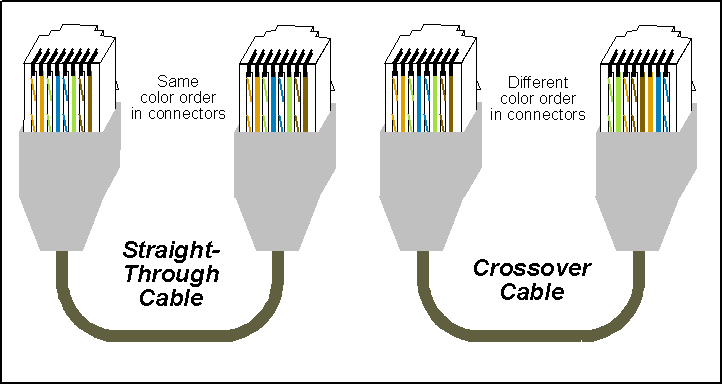What is a Ethernet Crossover Cable?

The crossover cable connects two Ethernet network devices to each other. They were created to support temporary host-to-host networking in situations where an intermediate device like a network router is not present. Although crossover cables appear the same as a standard straight-through (patch) Ethernet cables until their internal wiring structures are compared.
Straight Through vs. Crossover
A normal patch cable is used to connect different types of devices together, like a computer to a network switch. In contrast, a crossover cable is for connecting two identical devices.
The straight-through cable’s ends can be wired in any manner, but both ends must be identical. This is different from the crossover cable’s internal wiring, which reverses the signals for receiving and transmitting. The first and third wires and the second and sixth wires are crossed.
High-quality Ethernet crossover cords have unique markings that enable users to distinguish them from straight-through cables. Many are red in color and also have “crossover” marked on its packaging and cable casing.
Crossover Cable Needs
Crossover cables came into use during the 1990s and 2000s because the most common types of Ethernet were unable to support direct cable connections between hosts. Intended for using specific wires for both receiving and transmitting signals, the original and Fast Ethernet standards required the communication of two endpoints through an intermediary device to avoid conflicts.
A feature of Ethernet called MDI-X provides the necessary auto-detection support to prevent these signal conflicts. It allows the Ethernet interface to automatically determine and negotiate the expected signaling convention of the device at the other end of the cable. The majority of home broadband routers and Gigabit Ethernet adopted MDI-X.
As a result, crossover cables are only necessary for the connection of two Ethernet client devices if they are not configured for Gigabit Ethernet. Nowadays, Ethernet devices are compatible with crossover cables because they can automatically detect them.
Ethernet Crossover Cables Usage
Crossover cable usage should be limited to direct network connections. For the reason described above, attempting to connect a computer to an old router or network switch via a crossover cable rather than a standard cable, the link can be prevented from working.
